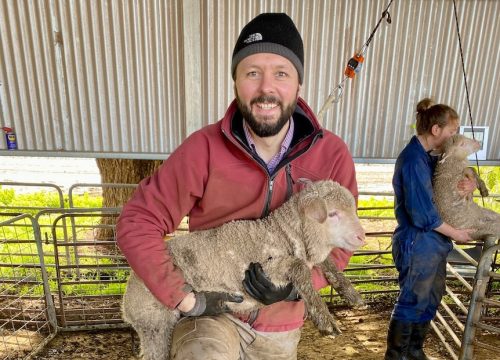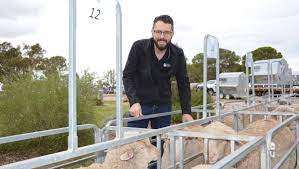South Australian project focuses on different lamb marking methods.
How do we know how much pain an animal is feeling? It’s a question that’s been the focus of research over many years. Pain is subjective and differs between individuals.
We can describe our pain or rate it between 1 and 10, yet animals are obviously unable to do that. This means we have to find other ways to assess it.
Existing methods include physiological measures of protein markers in blood and observation of pain-related behaviors using standardized scales (known as ethograms).
Now some remarkable research could add some astonishing new tests.
Groundbreaking research in Adelaide
Professor Mark Hutchinson from the University of Adelaide is a neuroscientist who has been investigating whether developments in the study of human pain can be transferred to livestock.
As Director of the Australian Research Council Centre of Excellence for Nanoscale Biophotonics (CNBP), Mark and his team have been researching whether pain can create permanent physical changes to the body.
Yes, you read that correctly. In human medical research, it has been found that chronic pain can change human cells in ways that are visible in biomarker tests of the central nervous system and blood. Chronic pain becomes physically imprinted in the body.


Professor Hutchinson told the ABC’s SA Country Hour:
“We now know what pain looks like at a molecular and cellular level, we can take brains and spinal cords of humans and animals and say definitively, ‘Has this brain experienced pain? The first step for us has been to ask, ‘Do we see these same signatures in sheep, beef, cattle, and pigs?’ And, yes, we do.”
Does Lamb Marking Cause Chronic Pain?
An earlier finding from human research already applicable to lamb marking is that pain medication administered at the time of a procedure, rather than after, prevents pain signals arriving in the spinal cord or brain.
This means that pain fails to develop, rather than developing and being treated afterwards.
The current research goes further. New tests for sheep are being validated through a Meat & Livestock Australia-funded project between the CNBP and the Davies Livestock Research Centre at the University of Adelaide’s Roseworthy Campus.

What’s interesting to Team Numnuts is that these tests are measuring the responses to a range of lamb marking procedures. All lambs are blood tested before marking, with further blood tests for pain markers conducted several weeks down the line.
Not only will this tell us about pain levels at the time of the procedure, but also whether painful healing periods, for example from the burns caused by a hot knife for tail docking, cause longer term damage to the animal.
For the first time, we will have an objective comparison of the pain caused by docking and castration with rings compared with the hot knife, both with and without pain relief.
Development of New Pain Medications
According to Professor Hutchinson, this research could open a pathway to new medicines to control both acute and chronic pain in livestock, improving animal welfare and boosting farmers’ bottom lines.
“The upside is that if you have animals that are resilient, able to make decisions and not developing chronic pain, those animals will have greater immune protection capacity. They will have the decision-processing ability to eat food when they need it and they’ll have greater emotional capacity.
“All of those point to an animal that is better off under difficult, climate-changing environments, but also one that should be easier to rear and, therefore, literally have more meat on the bone.”
The above video is Professor Hutchinson’s contribution to Livestock SA’s Sheep Focus Workshop, 2021. This was one of eight talks – click here to view all the presentations.



